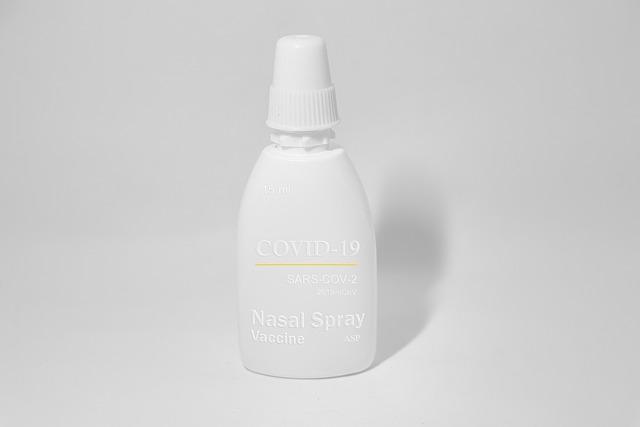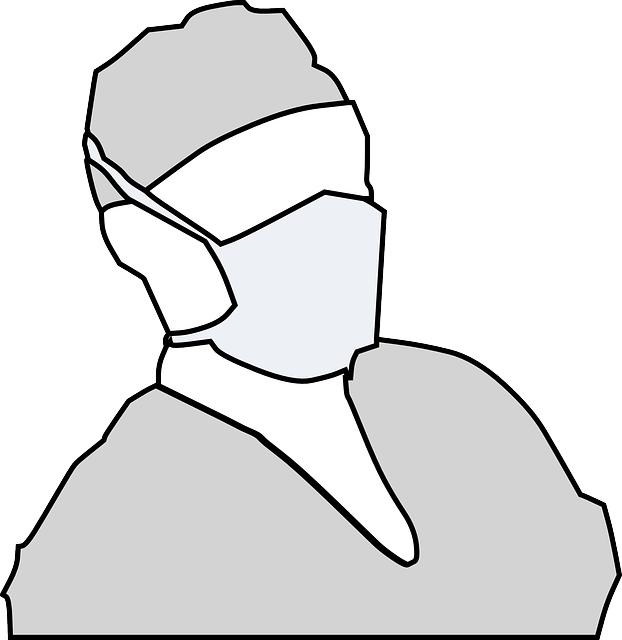What Is Hypertrophy of Nasal Turbinates? Nasal Health Explained

Have you ever experienced nasal congestion or difficulty breathing through your nose? If so, you might be familiar with the frustrating symptoms of hypertrophy of nasal turbinates. But what exactly does this condition entail, and why does it affect your nasal health? Prepare to dive into the fascinating world of nasal anatomy and discover the secrets behind this common yet elusive issue. In this informative article, we will unravel the mysteries of hypertrophy of nasal turbinates, explaining their role in nasal health and unveiling the underlying causes. Join us as we shed light on this topic, providing you with a clear, natural, and knowledgeable understanding of how to keep your nasal passages in tip-top shape. Get ready to breathe easier and regain control of your nasal health – let’s embark on this enlightening journey together.
Contents
- 1. Understanding Nasal Turbinates: The Key Players in Nasal Health
- 2. Unveiling Hypertrophy of Nasal Turbinates: Causes and Symptoms
- 3. The Impact of Hypertrophy on Nasal Health: How it Affects Breathing
- 4. Seeking Relief: Effective Treatment Options for Nasal Turbinate Hypertrophy
- 5. Lifestyle Changes for Managing Nasal Turbinate Hypertrophy: Tips for Improved Nasal Health
- 6. Prevention is Better than Cure: Strategies to Reduce the Risk of Nasal Turbinate Hypertrophy
- 7. Nasal Turbinate Hypertrophy in Children: Understanding and Managing in Pediatric Patients
- 8. The Role of Allergies in Nasal Turbinate Hypertrophy: Identifying Triggers and Finding Solutions
- 9. Surgical Interventions for Severe Nasal Turbinate Hypertrophy: When Other Options Fail
- 10. Maintaining Nasal Health: Daily Habits for Optimal Nasal Turbinate Function
1. Understanding Nasal Turbinates: The Key Players in Nasal Health
Nasal turbinates are essential structures in the nasal cavity that play a crucial role in maintaining nasal health. These small, bony structures are located along the sides of the nasal passages and are covered in a mucous membrane. Their primary function is to humidify and filter the air we breathe, as well as improve the airflow within the nasal passages.
When nasal turbinates become enlarged or swollen, a condition known as nasal turbinate hypertrophy occurs. This can be caused by various factors, including allergies, sinus infections, or chronic inflammation. Nasal turbinate hypertrophy can lead to symptoms such as nasal congestion, difficulty breathing through the nose, and reduced sense of smell.
Managing nasal turbinate hypertrophy is essential for maintaining optimal nasal health. Treatment options may include using nasal sprays or decongestants to reduce swelling, avoiding triggers such as allergens, and in some cases, surgical intervention to remove or reduce the size of the turbinates. Consulting an ENT specialist is crucial for an accurate diagnosis and a personalized treatment plan to address nasal turbinate hypertrophy effectively.
To promote overall nasal health, it is important to take steps to keep the nasal passages clean and clear. Using a saline rinse or nasal irrigation can help flush away irritants and maintain proper moisture levels. Additionally, practicing good hygiene habits and avoiding smoking or exposure to secondhand smoke can contribute to healthier nasal passages. By understanding the role of nasal turbinates and recognizing the signs of nasal turbinate hypertrophy, you can make informed decisions to support your nasal health and improve your overall well-being.
2. Unveiling Hypertrophy of Nasal Turbinates: Causes and Symptoms
Hypertrophy of nasal turbinates occurs when the tissues in the three nasal turbinates, responsible for filtering and moisturizing the air we breathe, become enlarged. While it may sound intimidating, this condition is fairly common and can be caused by a variety of factors. One main cause is chronic inflammation of the nasal passages, often due to allergies or recurring sinus infections. Other potential causes include structural abnormalities, such as a deviated septum or nasal polyps.
So, how do you know if you might be experiencing hypertrophy of nasal turbinates? Look out for some telltale symptoms, including chronic nasal congestion, difficulty breathing through the nose, frequent nosebleeds, and a decreased sense of smell or taste. These symptoms can greatly impact your quality of life, making it difficult to sleep, exercise, or even just enjoy a meal. If you’re experiencing any of these symptoms, it’s essential to consult a healthcare professional for an accurate diagnosis and appropriate treatment options. Remember, everyone’s situation is unique, and a personalized approach is key to finding relief.
To alleviate the discomfort caused by hypertrophy of nasal turbinates, various treatment options are available. Depending on the severity of your condition, your doctor may recommend conservative measures like saline nasal sprays, antihistamines, or nasal steroid sprays to reduce inflammation. In more severe cases, when conservative measures have proven ineffective, surgical interventions may be considered. Procedures such as turbinate reduction or septoplasty can help restore proper airflow and improve nasal breathing.
Investing in your nasal health is crucial for overall well-being. By understanding the causes and symptoms of hypertrophy of nasal turbinates, you can take proactive steps toward finding relief and improving your daily life. Whether it’s exploring non-surgical options or considering a surgical intervention, remember that there are solutions available to help you breathe easier and enjoy optimal nasal health.
3. The Impact of Hypertrophy on Nasal Health: How it Affects Breathing
The hypertrophy of nasal turbinates refers to the abnormal enlargement of the bony structures in your nose called nasal turbinates. These structures are responsible for filtering and humidifying the air you breathe in, as well as helping to regulate airflow. When these turbinates become swollen and larger than usual, it can have a significant impact on your nasal health and breathing.
One of the main problems associated with hypertrophy of nasal turbinates is nasal congestion. The enlarged turbinates obstruct the nasal passages, making it difficult for air to flow freely through your nose. This can lead to snoring, mouth breathing, and difficulty breathing through the nose. When you’re unable to breathe properly through your nose, it can cause discomfort, disrupt your sleep, and even affect your quality of life.
Another issue is the increased risk of developing sinus infections. The enlarged turbinates can block the sinuses, preventing proper drainage and leading to the accumulation of mucus. This stagnant mucus becomes a breeding ground for bacteria, increasing the likelihood of infections. Sinus infections can cause symptoms such as facial pain, pressure, nasal discharge, and headaches.
To address the impact of hypertrophy on nasal health, various treatment options are available. These range from conservative measures such as nasal sprays and saline rinses to surgical interventions like turbinoplasty, which aims to reduce the size of the turbinates. It’s important to consult with an otolaryngologist or ENT specialist to determine the most appropriate treatment for your specific case.
In summary, hypertrophy of nasal turbinates can have a significant impact on your nasal health and breathing. It can cause nasal congestion, snoring, mouth breathing, and increase the risk of sinus infections. Seeking professional medical advice and exploring treatment options can help alleviate these symptoms and improve your overall nasal health.
4. Seeking Relief: Effective Treatment Options for Nasal Turbinate Hypertrophy
In this post, we’ll be exploring effective treatment options for nasal turbinates hypertrophy, a condition that can cause significant discomfort and impact your nasal health. To better understand this condition, let’s first define what nasal turbinate hypertrophy is.
Nasal turbinate hypertrophy refers to the enlargement or swelling of the nasal turbinates, which are three pairs of bony structures inside the nose. These turbinates are responsible for humidifying and filtering the air we breathe, but when they become hypersensitive or inflamed, they can cause congestion, difficulty breathing through the nose, and even facial pain. It’s important to note that this condition can be caused by a variety of factors, including allergies, chronic sinusitis, or even anatomical abnormalities.
Finding relief from nasal turbinate hypertrophy is crucial for improving your overall nasal health. Thankfully, there are several effective treatment options available that can help alleviate the symptoms and restore normal nasal function. Here are some options to consider:
-
Medications: Over-the-counter nasal sprays or oral antihistamines may provide temporary relief by reducing inflammation and congestion. However, it’s essential to consult with a healthcare professional before using these medications long-term, as they can sometimes lead to rebound congestion.
-
Nasal irrigation: This technique involves flushing the nasal passages with a saline solution, helping to remove irritants and reduce the swelling of the turbinates. Neti pots or nasal irrigation kits can be easily purchased and used at home.
- Surgical interventions: In cases where conservative treatments fail to provide relief, surgical interventions may be recommended. Procedures such as turbinate reduction surgery can help reduce the size of the turbinates, allowing for improved airflow. It’s important to discuss these options with an ENT specialist to determine the best course of action for your specific condition.
Remember, seeking professional medical advice is crucial when dealing with nasal turbinate hypertrophy. A healthcare provider can assess your symptoms, conduct necessary tests, and recommend the most suitable treatment plan for you. Don’t let nasal turbinate hypertrophy hinder your nasal health; explore these treatment options to find relief and breathe freely once again.
5. Lifestyle Changes for Managing Nasal Turbinate Hypertrophy: Tips for Improved Nasal Health
Nasal turbinate hypertrophy refers to the swelling and enlargement of the nasal turbinates, which are structures inside the nasal passages that help filter and humidify the air we breathe. When the turbinates become enlarged, they can obstruct airflow and lead to symptoms such as nasal congestion, difficulty breathing, and chronic sinus problems. Fortunately, there are lifestyle changes that can help manage this condition and promote improved nasal health.
-
Keep the air clean and moist: Using a humidifier in your home can help keep the air moist, which can reduce nasal dryness and irritation. Additionally, using air purifiers can filter out allergens, pollutants, and irritants that can aggravate nasal congestion.
-
Maintain proper nasal hygiene: Practicing good nasal hygiene is essential for managing nasal turbinate hypertrophy. This includes regularly rinsing your nasal passages with saline solution to keep them clean and reduce inflammation.
-
Avoid triggers: Identify and avoid any triggers that may worsen your symptoms. Common triggers include cigarette smoke, strong odors, and allergens such as dust mites, pet dander, and pollen. Taking steps to minimize your exposure to these triggers can greatly improve your nasal health.
-
Stay hydrated: Drinking plenty of fluids can help thin mucus and reduce nasal congestion. Aim to drink at least 8 cups of water or other non-caffeinated beverages each day to stay properly hydrated.
- Consider nasal strips or dilators: These over-the-counter devices can help open up your nasal passages and improve airflow, providing relief from nasal congestion.
Making these lifestyle changes can significantly improve your nasal health and alleviate symptoms associated with nasal turbinate hypertrophy. However, if your symptoms persist or worsen, it is always best to consult with a medical professional for further evaluation and treatment options. Remember, every person is unique, and what may work for one individual may not work for another.
6. Prevention is Better than Cure: Strategies to Reduce the Risk of Nasal Turbinate Hypertrophy
Nasal turbinate hypertrophy refers to the excessive enlargement of the structures known as nasal turbinates, which are located inside the nasal cavity. When the turbinates become swollen and enlarged, they can cause a variety of uncomfortable symptoms, including nasal congestion, difficulty breathing through the nose, chronic sinus infections, and snoring. It is essential to understand this condition and implement strategies to prevent it to maintain optimal nasal health.
There are several effective strategies that can help reduce the risk and severity of nasal turbinate hypertrophy:
- Maintain a clean and dust-free environment: Regularly clean your living space to remove dust, pet dander, and other allergens that can trigger nasal inflammation and swelling.
- Avoid smoking and exposure to secondhand smoke: Smoking can irritate the nasal passages, leading to inflammation and swelling of the turbinates. Quitting smoking and staying away from smoke-filled environments are crucial for nasal health.
- Manage allergies effectively: Allergic reactions can significantly contribute to nasal turbinate hypertrophy. Identify and avoid allergens that trigger your symptoms, consider allergy shots or medications as prescribed by a healthcare professional.
- Stay hydrated: Proper hydration plays a vital role in maintaining nasal health. Drink plenty of water throughout the day to keep the nasal passages moisturized and prevent excessive drying.
- Use a humidifier: In dry environments, consider using a humidifier to add moisture to the air. This helps prevent the turbinates from becoming dry and irritated, reducing the risk of hypertrophy.
- Avoid nasal irritants: Stay away from strong chemicals, pollutants, and other substances that can irritate the nasal passages and trigger inflammation. Take necessary precautions, such as wearing a mask or using protective measures when exposed to such irritants.
Implementing these prevention strategies can significantly reduce the risk of developing nasal turbinate hypertrophy and promote overall nasal health. However, if you are experiencing persistent or severe nasal symptoms, it is essential to consult a healthcare professional for a proper diagnosis and tailored treatment plan.
7. Nasal Turbinate Hypertrophy in Children: Understanding and Managing in Pediatric Patients
Nasal turbinate hypertrophy, a condition often seen in pediatric patients, refers to the abnormal enlargement of the turbinates in the nose. The turbinates are structures made up of thin bones covered by a layer of soft tissue, and their main function is to warm, humidify, and filter the air we breathe. However, when the turbinates grow larger than normal, they can obstruct the nasal passages, causing a range of symptoms that can significantly affect a child’s quality of life.
So, what causes nasal turbinate hypertrophy in children? Well, it can result from various factors, including allergies, chronic rhinitis, nasal infections, or even anatomical variations in the nose. When left untreated, this condition can lead to difficulties in breathing through the nose, chronic nasal congestion, snoring, nasal voice, and even sleep disturbance. Therefore, it is crucial for parents and healthcare providers to understand and manage nasal turbinate hypertrophy in pediatric patients effectively.
Managing nasal turbinate hypertrophy typically involves a combination of medical interventions and lifestyle changes. Treatment options may include the use of nasal corticosteroids to reduce inflammation, antihistamines to alleviate allergies, or saline nasal sprays to promote nasal moisture. In some cases, surgical procedures may be recommended, such as turbinoplasty, which aims to remove or reduce the size of the hypertrophic turbinates. However, the appropriate treatment approach will depend on the severity of the condition and the underlying causes.
In conclusion, understanding and managing nasal turbinate hypertrophy in pediatric patients is essential for ensuring optimal nasal health. By addressing the underlying causes and implementing appropriate treatment strategies, parents and healthcare providers can help alleviate symptoms and improve the overall well-being of children with this condition. It is important to consult with a healthcare professional for an accurate diagnosis and personalized treatment plan for each child.
8. The Role of Allergies in Nasal Turbinate Hypertrophy: Identifying Triggers and Finding Solutions
Nasal turbinates play a crucial role in our respiratory system, but when they become hypertrophic, it can lead to a variety of uncomfortable symptoms. Hypertrophy refers to the excessive growth of tissue, and in this case, it occurs in the nasal turbinates, which are responsible for filtering, humidifying, and warming the air we breathe. When these turbinates become enlarged due to allergies, it can cause nasal congestion, difficulty breathing, snoring, and even sleep apnea.
Identifying the triggers that contribute to nasal turbinate hypertrophy is essential in finding effective solutions. Allergies are a common culprit behind this condition, as they can cause inflammation in the nasal passages, leading to the enlargement of the turbinates. Common allergens include pollen, dust mites, pet dander, and mold. Identifying which specific allergens trigger your symptoms can help you take proactive measures to avoid them and minimize the hypertrophy of your nasal turbinates.
Finding solutions for nasal turbinate hypertrophy involves managing allergies effectively. Here are some steps you can take to alleviate the symptoms:
-
Allergy testing: Consult with an allergist to determine the specific allergens that trigger your symptoms. This will help you customize your treatment plan accordingly.
-
Medication: Over-the-counter antihistamines, nasal sprays, and decongestants can provide temporary relief from nasal congestion and inflammation. However, for long-term management, prescription medications may be necessary.
-
Allergen avoidance: Take steps to minimize your exposure to allergens, such as using allergen-proof bedding, regularly cleaning your living space, and keeping pets out of your bedroom.
- Immunotherapy: In cases of severe or persistent allergies, your doctor may recommend immunotherapy. This involves gradually exposing you to small doses of the allergen to desensitize your immune system over time.
Remember, effective management of nasal turbinate hypertrophy requires a comprehensive approach that addresses both the underlying allergies and the symptoms they cause. By identifying triggers and taking proactive measures, you can find solutions that improve your nasal health and overall well-being.
9. Surgical Interventions for Severe Nasal Turbinate Hypertrophy: When Other Options Fail
Severe nasal turbinate hypertrophy refers to the excessive enlargement of the nasal turbinates, which are the structures inside your nose that help warm, humidify, and filter the air you breathe. When nasal turbinates become hypertrophic, they can narrow the nasal passages and obstruct proper airflow, causing a range of symptoms such as nasal congestion, difficulty breathing, snoring, and chronic sinusitis.
While there are various non-surgical treatments available to manage nasal turbinate hypertrophy, such as nasal sprays, antihistamines, and nasal irrigation, they may not always provide relief for severe cases. When conservative treatment options fail to alleviate symptoms, surgical intervention may be considered as a more permanent solution.
The surgical procedures for severe nasal turbinate hypertrophy aim to reduce the size of the turbinates, thus improving airflow and relieving symptoms. These interventions are performed by ear, nose, and throat specialists and may involve different techniques, including:
-
Turbinate reduction: This surgical procedure involves removing a portion of the hypertrophic turbinates, either through delicate trimming or using minimally invasive techniques such as radiofrequency ablation or coblation. These methods help to reduce the size of the turbinates and relieve nasal congestion.
-
Submucosal resection: In this procedure, the surgeon removes a small portion of the turbinate bone to create more space within the nasal passage. By doing so, airflow is improved, and symptoms are alleviated.
- Turbinate outfracture: This technique involves breaking the nasal turbinate bone and repositioning it to open up the nasal passage. It helps to widen the airway and improve breathing.
It is essential to consult with a qualified healthcare professional to determine the most suitable surgical intervention based on the severity of nasal turbinate hypertrophy and individual characteristics. The goal of surgical interventions is to restore proper nasal function, enhance overall nasal health, and provide lasting relief from the symptoms associated with severe nasal turbinate hypertrophy.
10. Maintaining Nasal Health: Daily Habits for Optimal Nasal Turbinate Function
Proper nasal health is crucial for overall well-being and optimal respiratory function. One common condition that can impact nasal health is known as hypertrophy of the nasal turbinates. Nasal turbinates are small, bony structures located inside the nose that help to filter and humidify the air we breathe. When these turbinates become enlarged due to inflammation or other factors, it can lead to symptoms like nasal congestion, difficulty breathing, and frequent nosebleeds.
To maintain nasal health and promote optimal nasal turbinate function, there are several daily habits that can be incorporated into your routine. Firstly, practicing good hygiene by regularly washing your hands and avoiding touching your face can help prevent the spread of harmful bacteria and viruses that can lead to nasal inflammation. Additionally, using a saline nasal spray or rinse can help to keep the nasal passages moisturized and reduce inflammation. A humidifier in your living environment can also add moisture to the air and alleviate nasal dryness.
Incorporating certain lifestyle changes can also contribute to healthier nasal turbinates. Avoiding exposure to irritants such as cigarette smoke, pollutants, and allergens can help reduce nasal inflammation. Maintaining a well-balanced diet rich in fruits and vegetables can boost your immune system and reduce the risk of developing nasal allergies or infections. Staying hydrated by drinking enough water throughout the day is also crucial for keeping the nasal passages moist and preventing dryness.
By implementing these daily habits, you can support optimal nasal turbinate function and reduce the risk of complications from hypertrophy of the nasal turbinates. Remember, it’s essential to consult with a healthcare professional if you have persistent nasal symptoms or concerns about your nasal health. In conclusion, understanding the concept of hypertrophy of nasal turbinates is key to maintaining optimal nasal health. By recognizing the signs and symptoms associated with this condition, you can seek the appropriate medical attention and take proactive steps towards finding relief. Remember, a healthy nose leads to better breathing, more restful sleep, and an overall improved quality of life. So, stay informed, stay proactive, and breathe easy. Your nasal health is in your hands!












